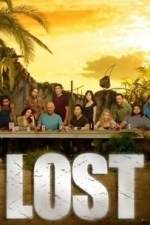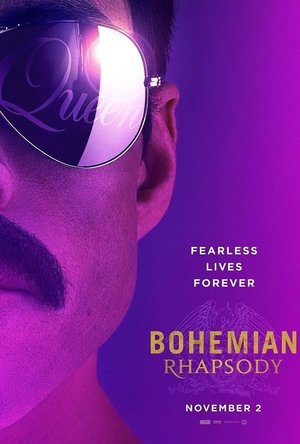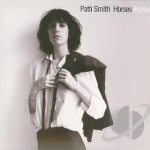Search
Search results

Lost - Season 1
TV Season Watch
Oceanic Air flight 815 tore apart in mid-air and crashed on a Pacific island, leaving 48 passengers...
Justin Young recommended track Dancing Queen by ABBA in Gold: Greatest Hits by ABBA in Music (curated)

For the Demented by Annihilator
Album Watch
Annihilator’s brand-new album “For The demented” promises to pack a premier punch....
Metal

Infinity Blade III
Games and Entertainment
App
Join our new forums: https://www.epicgames.com/infinityblade/forums/ What the press is saying about...
Lucy Buglass (45 KP) rated Bohemian Rhapsody (2018) in Movies
Jun 20, 2019
An honest, captivating and respectful biopic
Biopics are not easy to perfect and when you’re dealing with an iconic figure such as Freddie Mercury, it becomes even harder. When this film was announced it seemed natural to feel a little bit of apprehension, because could anyone really portray Freddie? Who could bring him to life on screen before thousands of fans? Thankfully, for me at least, my worries were soon quenched as soon as I began to watch it. I thought was a stunning film and I have no problem admitting that brought tears to my eyes on several occasions.
Rami Malek was an excellent choice to portray Freddie, to the point where I found myself believing I was watching the man himself. His stage presence especially was spot on and the live performances were simply stunning to watch, especially with surround sound. I felt transported, part of the crowd, and it was such a special moment to share with the rest of the cinema. We become part of different times and places in a matter of minutes, giving you an idea of just how globally successful and adored Queen were. Despite the film’s main focus being Freddie, the supporting roles of the rest of the band were fantastic too, and I have so much praise for Gwilym Lee, Ben Hardy and Joseph Mazzello for their performances.
Freddie dealt with a lot of discrimination during his career, particularly due to his race, sexuality and flamboyant personality. The film chose to portray these issues honestly, because pretending they didn’t exist would be an insult. When Freddie first starts performing with the rest of Queen, he’s greeted with questions such as “Who’s the P***?”, which for a modern audience is a terrible racial slur that I don’t even feel comfortable writing here. But for a Indian-British Parsi musician performing to a largely white audience in the ’70s, this word would have been used a lot. I feel it was important for the filmmakers to shed light on this as it provides context into Freddie’s upbringing and life that some may not have known about, including his real name: Farrokh Bulsara.
In terms of his sexuality, the film uses the role of the press to exploit and make a big deal about his personal relationships. The press conference scene was particularly uncomfortable as he’s bombarded with inappropriate questions instead of focusing on Queen and their music. He was constantly criticised in papers and magazines for simply being himself, and that’s a heartbreaking truth that Bohemian Rhapsody really hammers home. His long-term relationship with Mary Austin is also focused on throughout, and how that broke down but they still remained in touch. It’s a complex part of his life that the film does well to explore in just over 2 hours.
It’s not all bleak, and although these dark truths are explored, the film is fundamentally a celebration of Freddie’s life and extraordinary talent. Several Queen songs are present throughout the film and we even see the writing process behind some of them, my favourite being the creation of We Will Rock You in which they wanted the audience to play along with them through stomps and claps. The birth of Bohemian Rhapsody is comical in nature and received a lot of backlash at the time, but as we know, has since gone on to become an iconic song we all know the lyrics to.
Even in Freddie’s final days, after he was diagnosed with AIDS, the film encourages us to celebrate their music and make the most of the time Freddie has left, which is exactly what he himself wanted to do. I can’t think of a more respectful and considerate way to show it than that.
I could probably write an entire essay about just how much I thought Bohemian Rhapsody got right, but hopefully I’ve managed to condense my thoughts somewhat. This is a film you simply must experience for yourself, at least once.
https://lucygoestohollywood.com/2018/11/14/bohemian-rhapsody-an-honest-captivating-and-respectful-biopic/
Rami Malek was an excellent choice to portray Freddie, to the point where I found myself believing I was watching the man himself. His stage presence especially was spot on and the live performances were simply stunning to watch, especially with surround sound. I felt transported, part of the crowd, and it was such a special moment to share with the rest of the cinema. We become part of different times and places in a matter of minutes, giving you an idea of just how globally successful and adored Queen were. Despite the film’s main focus being Freddie, the supporting roles of the rest of the band were fantastic too, and I have so much praise for Gwilym Lee, Ben Hardy and Joseph Mazzello for their performances.
Freddie dealt with a lot of discrimination during his career, particularly due to his race, sexuality and flamboyant personality. The film chose to portray these issues honestly, because pretending they didn’t exist would be an insult. When Freddie first starts performing with the rest of Queen, he’s greeted with questions such as “Who’s the P***?”, which for a modern audience is a terrible racial slur that I don’t even feel comfortable writing here. But for a Indian-British Parsi musician performing to a largely white audience in the ’70s, this word would have been used a lot. I feel it was important for the filmmakers to shed light on this as it provides context into Freddie’s upbringing and life that some may not have known about, including his real name: Farrokh Bulsara.
In terms of his sexuality, the film uses the role of the press to exploit and make a big deal about his personal relationships. The press conference scene was particularly uncomfortable as he’s bombarded with inappropriate questions instead of focusing on Queen and their music. He was constantly criticised in papers and magazines for simply being himself, and that’s a heartbreaking truth that Bohemian Rhapsody really hammers home. His long-term relationship with Mary Austin is also focused on throughout, and how that broke down but they still remained in touch. It’s a complex part of his life that the film does well to explore in just over 2 hours.
It’s not all bleak, and although these dark truths are explored, the film is fundamentally a celebration of Freddie’s life and extraordinary talent. Several Queen songs are present throughout the film and we even see the writing process behind some of them, my favourite being the creation of We Will Rock You in which they wanted the audience to play along with them through stomps and claps. The birth of Bohemian Rhapsody is comical in nature and received a lot of backlash at the time, but as we know, has since gone on to become an iconic song we all know the lyrics to.
Even in Freddie’s final days, after he was diagnosed with AIDS, the film encourages us to celebrate their music and make the most of the time Freddie has left, which is exactly what he himself wanted to do. I can’t think of a more respectful and considerate way to show it than that.
I could probably write an entire essay about just how much I thought Bohemian Rhapsody got right, but hopefully I’ve managed to condense my thoughts somewhat. This is a film you simply must experience for yourself, at least once.
https://lucygoestohollywood.com/2018/11/14/bohemian-rhapsody-an-honest-captivating-and-respectful-biopic/
Movie Metropolis (309 KP) rated Zombieland: Double Tap (2019) in Movies
Oct 24, 2019
Ten years is a long time in Hollywood. Ten years ago, to this day Avatar was yet to be released to the unsuspecting masses, with Titanic still reigning supreme over the global box-office and debutant director Ruben Fleischer surprised the cinema-going public with Zombieland.
Made on a tiny budget of just over $20million, it went on to gross over $100million globally and received unanimous praise. A sequel was widely expected in the years that followed but never materialised. That’s probably down to a few things; one being Emma Stone’s meteoric rise to fame, Jesse Eisenberg starring in some of the biggest and most celebrated films of the decade that followed and Woody Harrelson, well, being Woody Harrelson (that’s not a dig, we love you Woody).
Fleischer meanwhile went on to direct 30 Minutes or Less, Gangster Squad and Venom among a couple of other projects. The time for a Zombieland sequel came and went with the film’s core fanbase hoping that one day they’d get what they desired.
That day is now here with the release of Zombieland: Double Tap. With a cast of returning characters and the original director at the helm, things certainly look promising from a technical point of view, but has the ship sailed on getting this franchise off the ground?
Zombie slayers Tallahassee (Harrelson), Columbus (Eisenberg), Wichita (Stone), and Little Rock (Abigail Breslin) square off against a newly evolved strain of the undead as well as combatting their own personal demons in an effort to survive the ongoing zombie apocalypse.
Despite the popularity of the film’s actors since its predecessor, it’s nice to see all of the lead cast slot back into their roles seamlessly. Granted they’re a little older than we last remember them, and a little wiser too, but these characters still retain the charm and humour that made the last movie such a success.
Harrelson remains the standout and that’s mainly down to a nicely written script, penned by Rhett Reese, Paul Wernick and Dave Callaham. Between them they’ve worked on films like Gareth Edwards’ Godzilla, Ant-Man, Deadpool and its sequel and Life. That’s a pretty impressive roster of films it has to be said.
Eisenberg and Stone are also nicely written with a good character arc that means we get to see opposing sides to their roles. Unfortunately, Breslin is underused throughout, reduced to a part that feels much more like a support role. Of the new characters introduced, Rosario Dawson and Zoey Deutch are thinly written but reasonably entertaining.
The movie makes a big deal out of introducing some new breeds of zombie flesh-eaters, but doesn’t really do anything with them
Thankfully, the script remains a real highlight over the brisk 99-minute run-time with some genuine hilarity. The screenplay’s attempts at emotion work reasonably well but fall flat on a couple of occasions – the basis of the previous film was its humour and no surprises, this is where the sequel excels.
It’s a nice film to look at too. While some of the landscapes look a little too artificial, the sweeping shots of desolate buildings and roads add a sense of scale that was sometimes lacking last time around. The opening sequence inside the White House is great to watch and sets up the rest of the film well.
Zombieland: Double Tap works best when our band of characters is bouncing off each other and it’s a good job as the zombie action is fleeting. Some action pieces are well choregraphed but for a film about the world being overrun by the undead, there’s a distinct lack of them. The movie makes a big deal out of introducing some new breeds of zombie flesh-eaters, but doesn’t really do anything with them until the final act and that’s a bit of a shame.
Nevertheless, Zombieland: Double Tap remains easy-to-watch and likeable throughout with a cracking cast of characters. Unfortunately, the world has moved on from 2009 and zombie films, TV shows and books are ten-a-penny nowadays (something nicely referenced at the beginning of the film) and while Zombieland 2 does an awful lot right, in the end it’s a decent sequel to a great film, and nothing more than that.
Stick around for a post-credits sequence that follows on from the predecessors “greatest cameo ever”.
Made on a tiny budget of just over $20million, it went on to gross over $100million globally and received unanimous praise. A sequel was widely expected in the years that followed but never materialised. That’s probably down to a few things; one being Emma Stone’s meteoric rise to fame, Jesse Eisenberg starring in some of the biggest and most celebrated films of the decade that followed and Woody Harrelson, well, being Woody Harrelson (that’s not a dig, we love you Woody).
Fleischer meanwhile went on to direct 30 Minutes or Less, Gangster Squad and Venom among a couple of other projects. The time for a Zombieland sequel came and went with the film’s core fanbase hoping that one day they’d get what they desired.
That day is now here with the release of Zombieland: Double Tap. With a cast of returning characters and the original director at the helm, things certainly look promising from a technical point of view, but has the ship sailed on getting this franchise off the ground?
Zombie slayers Tallahassee (Harrelson), Columbus (Eisenberg), Wichita (Stone), and Little Rock (Abigail Breslin) square off against a newly evolved strain of the undead as well as combatting their own personal demons in an effort to survive the ongoing zombie apocalypse.
Despite the popularity of the film’s actors since its predecessor, it’s nice to see all of the lead cast slot back into their roles seamlessly. Granted they’re a little older than we last remember them, and a little wiser too, but these characters still retain the charm and humour that made the last movie such a success.
Harrelson remains the standout and that’s mainly down to a nicely written script, penned by Rhett Reese, Paul Wernick and Dave Callaham. Between them they’ve worked on films like Gareth Edwards’ Godzilla, Ant-Man, Deadpool and its sequel and Life. That’s a pretty impressive roster of films it has to be said.
Eisenberg and Stone are also nicely written with a good character arc that means we get to see opposing sides to their roles. Unfortunately, Breslin is underused throughout, reduced to a part that feels much more like a support role. Of the new characters introduced, Rosario Dawson and Zoey Deutch are thinly written but reasonably entertaining.
The movie makes a big deal out of introducing some new breeds of zombie flesh-eaters, but doesn’t really do anything with them
Thankfully, the script remains a real highlight over the brisk 99-minute run-time with some genuine hilarity. The screenplay’s attempts at emotion work reasonably well but fall flat on a couple of occasions – the basis of the previous film was its humour and no surprises, this is where the sequel excels.
It’s a nice film to look at too. While some of the landscapes look a little too artificial, the sweeping shots of desolate buildings and roads add a sense of scale that was sometimes lacking last time around. The opening sequence inside the White House is great to watch and sets up the rest of the film well.
Zombieland: Double Tap works best when our band of characters is bouncing off each other and it’s a good job as the zombie action is fleeting. Some action pieces are well choregraphed but for a film about the world being overrun by the undead, there’s a distinct lack of them. The movie makes a big deal out of introducing some new breeds of zombie flesh-eaters, but doesn’t really do anything with them until the final act and that’s a bit of a shame.
Nevertheless, Zombieland: Double Tap remains easy-to-watch and likeable throughout with a cracking cast of characters. Unfortunately, the world has moved on from 2009 and zombie films, TV shows and books are ten-a-penny nowadays (something nicely referenced at the beginning of the film) and while Zombieland 2 does an awful lot right, in the end it’s a decent sequel to a great film, and nothing more than that.
Stick around for a post-credits sequence that follows on from the predecessors “greatest cameo ever”.
Tim Booth recommended Horses by Patti Smith in Music (curated)
Cumberland (1142 KP) created a post in The Smashbomb Book Club
Jun 13, 2019
Gareth von Kallenbach (980 KP) rated Walk the Line (2005) in Movies
Aug 14, 2019
Condensing something as vast and complex as the life of a person into a film is often a daunting task. With so many events that comprise the span of an individual, knowing what to cover and what to omit is a daunting task for any writer. For an icon like Johnny Cash, this task becomes monumental as not only does the history and humanity of the individual need to be captured, but the very soul of the artist as well.
Thankfully in the film Walk the Line Writer Gil Dennis and Writer/Director James Mangold capture the very essence of The Man in Black. Unlike many biopics that focus on the rise and fall of an individual, Walk the Line strives to balance than man and his demons without losing the compassion of the character.
The film stars Joaquin Phoenix as Johnny Cash, a man who rose from poverty in Dyess Arkansas to become on of the most beloved and enduring entertainers in history. Chronicling portions of his childhood, and the hardships he endured as well as his sting in the Air Force, we are shown things that helped shape the man he was to become. Shortly after his Air Force career, Johnny marries Vivian (Ginnifer Goodwin), and they start a family. Struggling to make ends meet as a door to door salesman, and facing pressure to take a job with her father in San Antonio Johnny manages to gain an audition for Sun Records in Nashville.
When told in the audition that his Gospel songs will not sell, Johnny instead performs one of his own compositions and earns a record contract. Before long, he and his band are on the road playing with the likes of Jerry Lee Lewis, Elvis Presley, and June Carter (Reese Witherspoon). June who has been part of a singing family
as well as an object of admiration for Johnny since their childhoods soon becomes a friend to Johnny as he copes with rising fame and the pressures and temptations of life on the road.
As Johnny spends more and more time on the road, tensions between him and Vivian grow causing Johnny to delve deeper into the temptations that are available to him as a star. During this time, Johhny becomes obsessed with June, who wile attracted to Johnny has just come from a failed marriage and does not want to break up Johnny’s family. It is against this backdrop that the unusual courtship between the two begins. They spend time with one another on the road, they talk for hours on end, and even perform duets with one another on stage, yet Johnny’s love for June remains a source of frustration that only leads him deeper into his destructive behaviors.
While the addition that grips Johnny is a driving part of the film, the main focus of the story is the love between Johnny and June and their unusual courtship that survived despite marriages, addictions, denials, and their own insecurities. Phoenix and Witherspoon are amazing and give Oscar Caliber performances that are easily the best in recent years. Not only do they both convey the mannerisms of their flesh and blood counterparts, but they convey solid chemistry and compassion from the audience.
While one can say that Johnny was an adulterer and a drug addict, his gentle nature, compassion, and humanity are abundantly clear in the way he is portrayed by Phoenix. We do not see Cash as a stuck up rock star, we see him as a simple human being, who used his gifts to connect with the masses yet never lost site of his heart. His tenderness, honesty, and devotion to his music, June, and eventually himself are clear and Phoenix is able to portray this by a reserved and endearing manner that captures the man he is portraying. Far too many films of this type are loaded with scenes of conflict, screaming, conflict and destruction that it was refreshing to see Johnny attempt to win June by stubbornness, and persistence yet never losing his easy going mannerisms despite being wracked by addiction.
Much has been made of the decision to let Phoenix and Witherspoon sing their parts rather than dub the voices. Unlike in the film “Ray” where Jaime Foxx had his singing dubbed over, the accurate and heartfelt interpretations of the songs only underscores the triumph and complexity of their performances.
Not just a good film but a great film, Walk the Line is an endearing and entertaining film that keeps you engrossed from start to finish. If you are not a fan of Johnny Cash when you see this film, at the least you will find a new found respect for this American Legend.
Thankfully in the film Walk the Line Writer Gil Dennis and Writer/Director James Mangold capture the very essence of The Man in Black. Unlike many biopics that focus on the rise and fall of an individual, Walk the Line strives to balance than man and his demons without losing the compassion of the character.
The film stars Joaquin Phoenix as Johnny Cash, a man who rose from poverty in Dyess Arkansas to become on of the most beloved and enduring entertainers in history. Chronicling portions of his childhood, and the hardships he endured as well as his sting in the Air Force, we are shown things that helped shape the man he was to become. Shortly after his Air Force career, Johnny marries Vivian (Ginnifer Goodwin), and they start a family. Struggling to make ends meet as a door to door salesman, and facing pressure to take a job with her father in San Antonio Johnny manages to gain an audition for Sun Records in Nashville.
When told in the audition that his Gospel songs will not sell, Johnny instead performs one of his own compositions and earns a record contract. Before long, he and his band are on the road playing with the likes of Jerry Lee Lewis, Elvis Presley, and June Carter (Reese Witherspoon). June who has been part of a singing family
as well as an object of admiration for Johnny since their childhoods soon becomes a friend to Johnny as he copes with rising fame and the pressures and temptations of life on the road.
As Johnny spends more and more time on the road, tensions between him and Vivian grow causing Johnny to delve deeper into the temptations that are available to him as a star. During this time, Johhny becomes obsessed with June, who wile attracted to Johnny has just come from a failed marriage and does not want to break up Johnny’s family. It is against this backdrop that the unusual courtship between the two begins. They spend time with one another on the road, they talk for hours on end, and even perform duets with one another on stage, yet Johnny’s love for June remains a source of frustration that only leads him deeper into his destructive behaviors.
While the addition that grips Johnny is a driving part of the film, the main focus of the story is the love between Johnny and June and their unusual courtship that survived despite marriages, addictions, denials, and their own insecurities. Phoenix and Witherspoon are amazing and give Oscar Caliber performances that are easily the best in recent years. Not only do they both convey the mannerisms of their flesh and blood counterparts, but they convey solid chemistry and compassion from the audience.
While one can say that Johnny was an adulterer and a drug addict, his gentle nature, compassion, and humanity are abundantly clear in the way he is portrayed by Phoenix. We do not see Cash as a stuck up rock star, we see him as a simple human being, who used his gifts to connect with the masses yet never lost site of his heart. His tenderness, honesty, and devotion to his music, June, and eventually himself are clear and Phoenix is able to portray this by a reserved and endearing manner that captures the man he is portraying. Far too many films of this type are loaded with scenes of conflict, screaming, conflict and destruction that it was refreshing to see Johnny attempt to win June by stubbornness, and persistence yet never losing his easy going mannerisms despite being wracked by addiction.
Much has been made of the decision to let Phoenix and Witherspoon sing their parts rather than dub the voices. Unlike in the film “Ray” where Jaime Foxx had his singing dubbed over, the accurate and heartfelt interpretations of the songs only underscores the triumph and complexity of their performances.
Not just a good film but a great film, Walk the Line is an endearing and entertaining film that keeps you engrossed from start to finish. If you are not a fan of Johnny Cash when you see this film, at the least you will find a new found respect for this American Legend.





